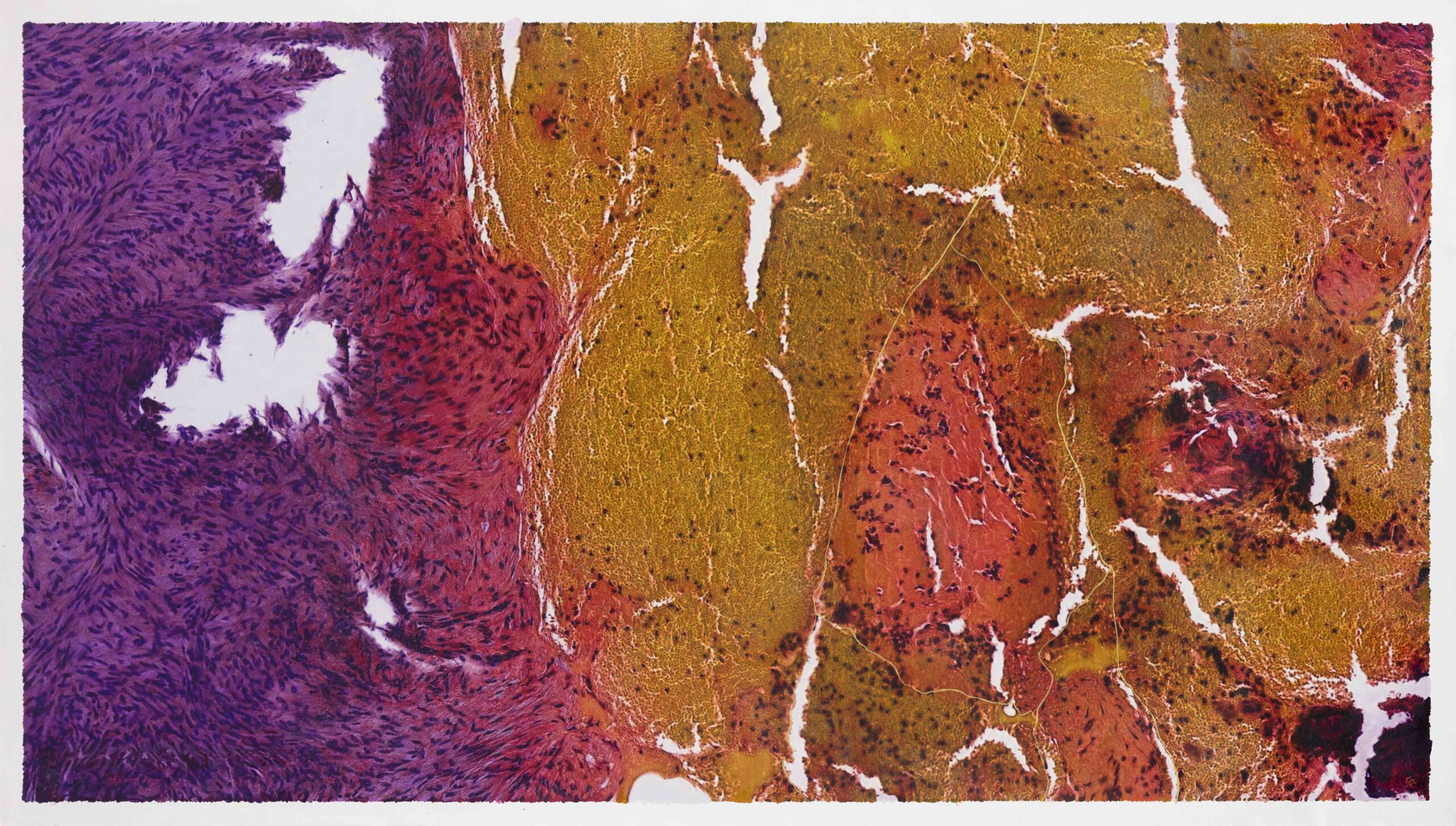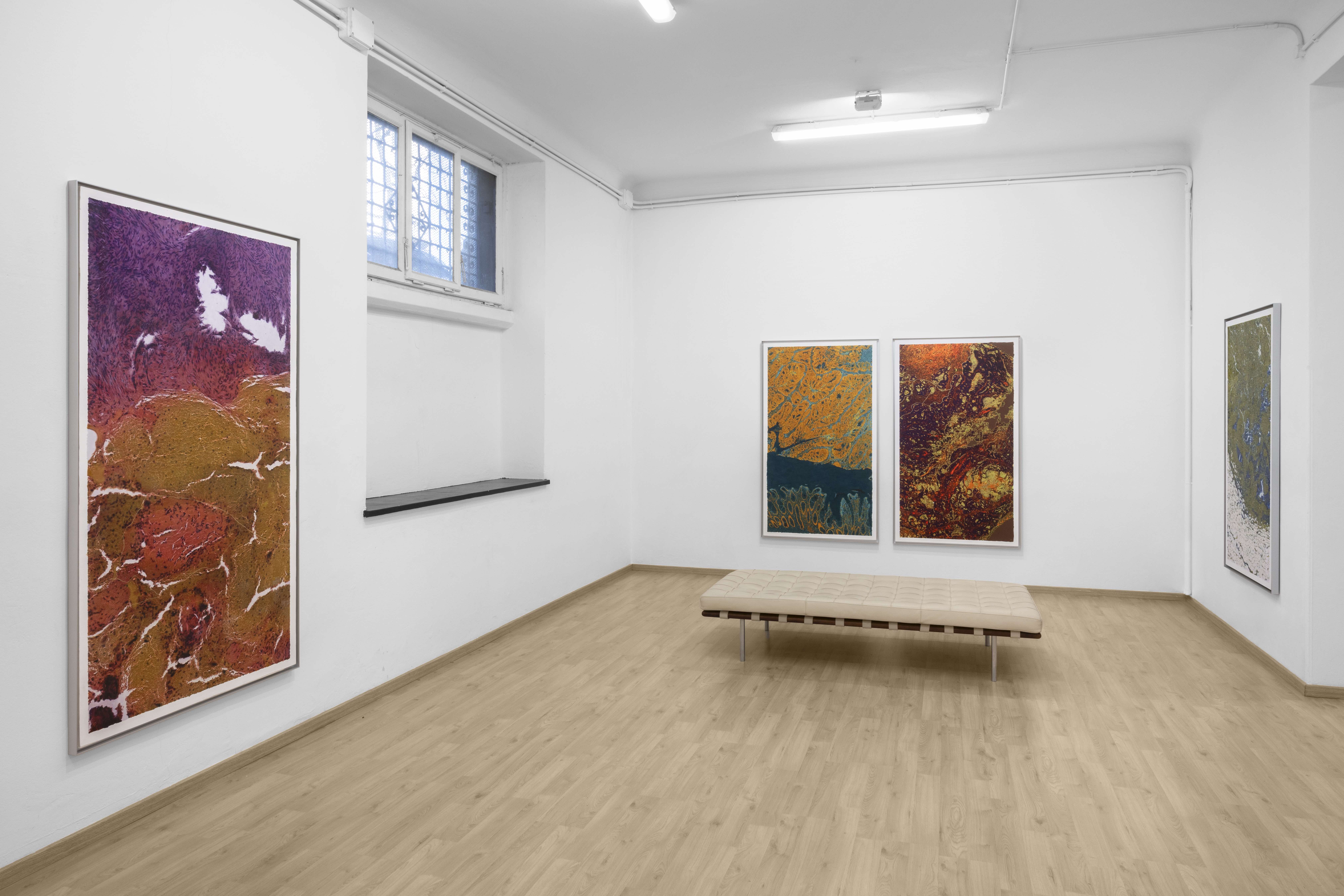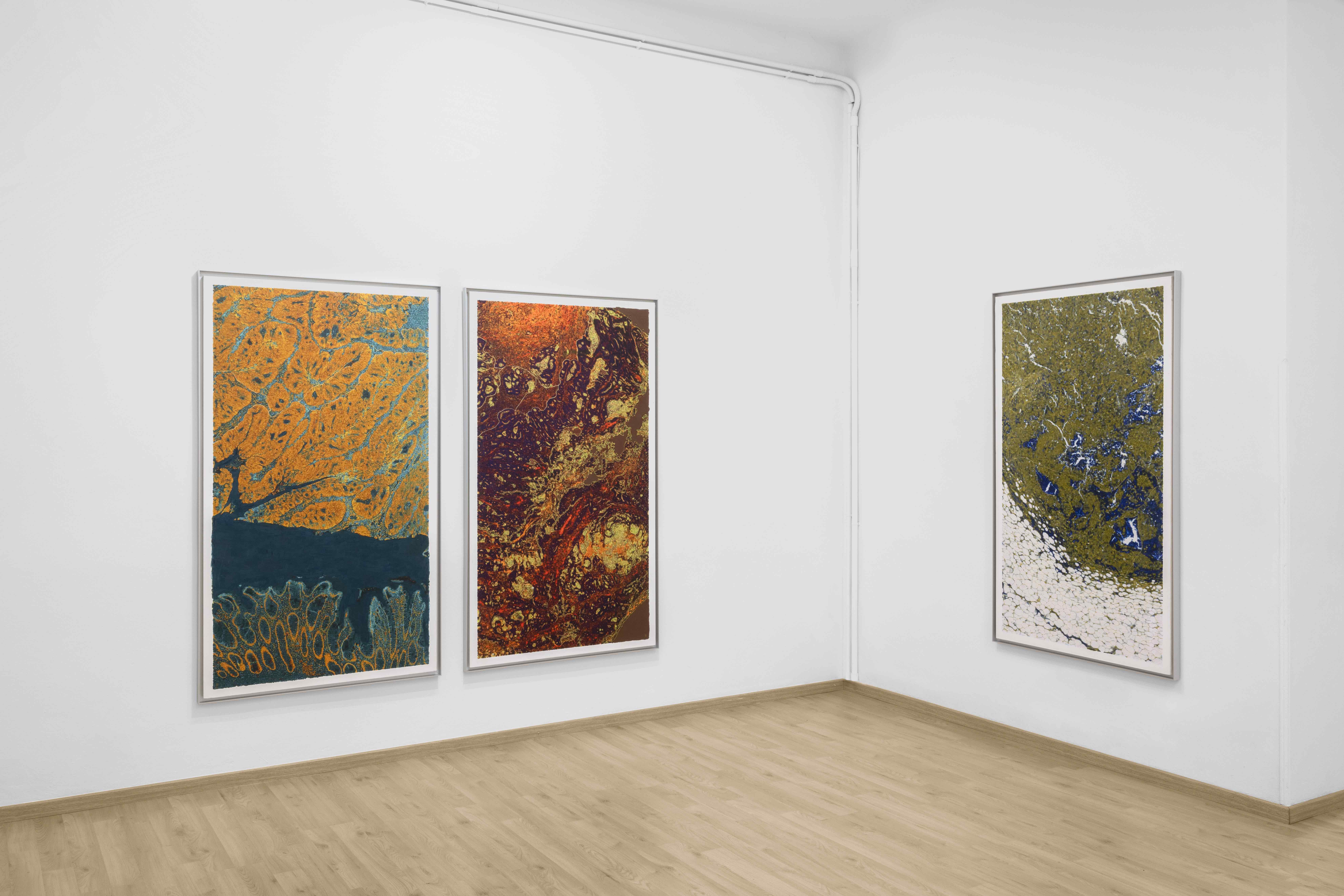
Have you ever tried to look beyond the surface of a work of art, discovering the hidden depths behind each masterpiece? Aldo Salucci, an artist originally from Rome and now working in Milan, invites us to do just that through his creations.
With a passion rooted since childhood for drawing and colors, Aldo Salucci has found in photography and digital post-production his personal channel of expression. These tools allow him to convey powerful messages in a spontaneous way, breaking free from traditional conventions. His exhibitions, such as “On the nature of things” and “Dystopia,” as well as his participation in relevant art fairs such as Unfair and The Others, testify to his commitment to the contemporary art scene.
The works of Aldo Salucci: a journey between Art and Hope

Installation_Courtesy A.MORE gallery e Mattia Mognetti
Looking at Aldo Salucci’s works immediately reveals his deep interest in human biology and anatomy, fields he explores with the help of the electron microscope and the use of vivid chemical reagents.
Through these techniques, the artist creates works that, while presenting indistinguishable forms at first glance, reveal detailed references to neoplasms and cancer cells under closer observation. This unique approach not only stages the deepest human fears but also encourages a reflection on the acceptance of trauma as elements of individual strength and uniqueness.
CONTRASTS AND COLORS IN THE WORKS OF ALDO SALUCCI
Salucci’s creations aim to reveal a complex world full of contradictions, hopes and sorrows.
His art becomes a canvas on which vibrant interpersonal relationships are woven in contrast to moments of isolation and suffering. The use of intense colors and alienating forms amplifies the dialogue with nature in an attempt to capture its indomitable strength and unpredictability.
Through his works, Aldo Salucci aspires to an authentic representation of existence.
Salucci pursues an artistic vision that goes beyond the mere aestheticization of pain.
With meticulous attention to detail, he portrays suffering in its stark reality, inviting the viewer to explore every aspect of it. This deep immersion in pain aims to examine its dehumanizing authority and, at the same time, reveal a path toward understanding and acceptance.
KINTSUGI: A METAPHOR FOR HEALING
A distinctive element in Aldo Salucci’s works is his adoption of the technique of kintsugi, which involves repairing shattered objects with gold, symbolizing the beauty and strength that emerge from wounds and imperfections. The artist applies this principle to his works, transforming tears and wounds into symbols of superior aesthetics and inner resilience. This gesture represents a powerful metaphor for healing and renewal, highlighting how scars can become sources of new strength and hope.

Installation_Courtesy A.MORE gallery e Mattia Mognetti
Aldo Salucci transforms photography from a simple tool to a vehicle for complex artistic expression, inviting the viewer to a deep reflection on the meaning of one’s scars and the possibilities for growth they can offer.
Aldo Salucci’s works, which can also be admired on the artist’s official website, are an invitation to confront one’s vulnerability, finding in it the key to a greater understanding of oneself and the world around us.
Each of Salucci’s works is a step toward self-acceptance and the discovery of how our most arduous trials can turn into valuable life lessons. In his creations, art becomes a mirror through which we can see not only pain and brokenness, but also the possibility of renewal and beauty that comes from our very imperfections.
Salucci reminds us that it is through the acceptance and reworking of our most difficult experiences that we can truly discover what we are made of.
In a time when digital art and digital culture are becoming more closely intertwined, Aldo Salucci’s works represent a bridge between the inner and outer worlds, between the personal and the universal. They invite us to explore the complexity of the human condition, showing us that even in the darkest moments hope and beauty can be born.
Are you an artist or gallery owner and want to publish an article like this? Use the email you find in the Contacts and write to us. We will explain how we can work together to publish an article like this.

